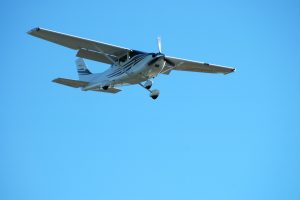 The Federal Aviation Administration (FAA) recently approved new procedures for changing the flight path of southbound turboprops to the west in particular wind conditions at Seattle-Tacoma International Airport (Sea-Tac). This process previously assigned headings to southbound turboprops manually. The new procedures automate the steps to concentrate low-flying planes over Burien, a city in Washington, after takeoff.
The Federal Aviation Administration (FAA) recently approved new procedures for changing the flight path of southbound turboprops to the west in particular wind conditions at Seattle-Tacoma International Airport (Sea-Tac). This process previously assigned headings to southbound turboprops manually. The new procedures automate the steps to concentrate low-flying planes over Burien, a city in Washington, after takeoff.
On November 27, City of Burien v. FAA, the U.S. Court of Appeals for the Ninth Circuit ruled that the FAA did not comply with the National Environmental Policy Act (NEPA) with this new process. The Ninth Circuit held that the FAA acted arbitrarily and capriciously by its application of a categorical exclusion (CATEX) without consideration of all “reasonably foreseeable” future actions at Sea-Tac in its consideration of whether a cumulative impacts extraordinary circumstance existed. Categorical exclusions cannot be used when extraordinary circumstances are present.
The FAA’s Defense
The FAA, as does all federal agencies, identifies types of actions that don’t require preparation of an environmental assessment (EA) or environmental impact statement (EIS) to comply with NEPA. These are called “categorical exclusions” (CATEXs). These actions must not “individually or cumulatively have a significant effect on the human environment.” Prior to applying a CATEX to a proposed action, the FAA needs to develop supporting documentation stating which CATEX is being used and why its use is appropriate, and documenting that there aren’t any applicable extraordinary circumstances.
The FAA believed that environmental review of the Sea-Tac process wasn’t necessary because an FAA CATEX for “modifications to currently approved procedures conducted below 3,000 feet [above ground level] that do not significantly increase noise over noise sensitive areas” was applicable for the proposed procedures.
The agency did examine several actions in the past, present, and foreseeable future within the area included in its cumulative impacts analysis. However, the analysis area didn’t include Sea-Tac. The FAA did not address future actions occurring at Sea-Tac or any cumulative impacts that might result from projects described in Sea-Tac’s Sustainable Airport Master Plan (SAMP), which is “a long-term blueprint for airport development to meet the needs of the traveling public, while reducing environmental and social impacts.”
The Court’s Decision
In its November 27 majority decision, the Ninth Circuit ruled that the FAA didn’t effectively foresee all potential future actions at Sea-Tac in its evaluation of whether the turboprop process may have a significant impact on the human environment, and in doing so, acted “arbitrarily and capriciously.”
The majority opinion expressed that, because the FAA was involved in the funding and creation of the SAMP, and that a SAMP document describing expansion projects was published only weeks after the turboprop process was approved in April 2018, the FAA must have been aware of the significant airport expansion to occur and included it in its cumulative impacts analysis.
In Conclusion
The Ninth Circuit concluded that the FAA must “consider the potential cumulative impact of all relevant reasonably foreseeable future actions — including those which may exist in the SAMP documents — as part of its extraordinary circumstances analysis.” This means the agency is now required to consider the cumulative impact of the turboprop process related to the SAMP, including airfield develop, facility modernization, terminal development, and more. As a result, the approval process for changes in airport operations and development projects could become more complex and time-consuming. The decision may cause the FAA and airport operators to halt airport development until the FAA adequately complies with NEPA, including preparation of an EA or EIS.
Adapted from: CATEX Controversy: The Ninth Circuit Strikes Down FAA Decision to Exempt a Sea-Tac Operational Change from Environmental Review, Roy Goldberg, JDSupra.com.